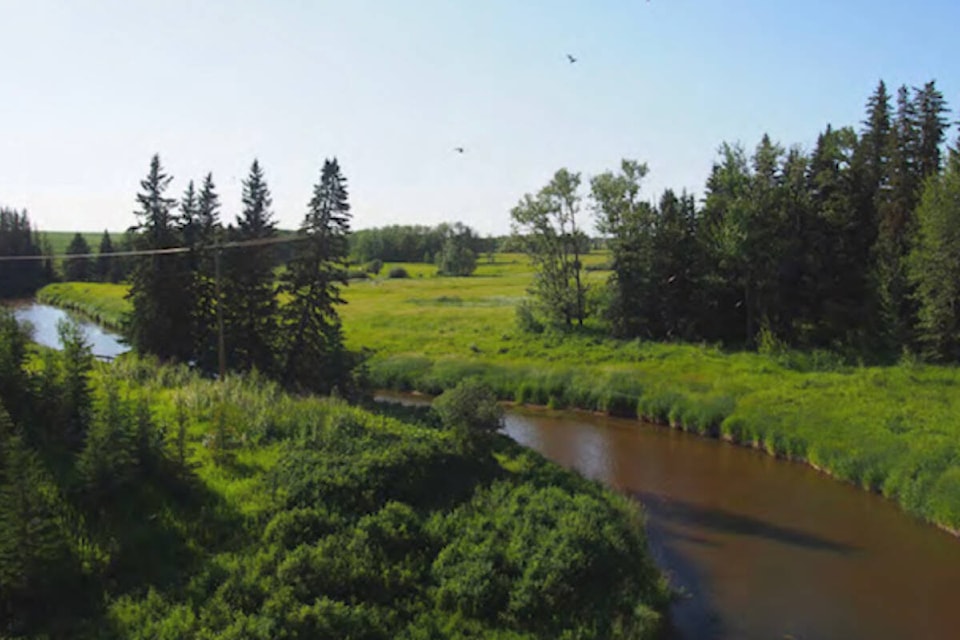Water sampling has begun to get to the bottom of Medicine River’s distinctive brown colour and to assess its health.
Medicine River Watershed Society recently received a $4,250 watershed stewardship grant to help fund the project and presentations to show the public the results later in the year.
Society member Dana Kreil said water samples are being taken at a pair of sites near Eckville and another location in the Spruce View area. The society in partnership with the Red Deer River Watershed Alliance have employed an Olds College student to help with the testing.
Kreil hopes that some of the funding can be used to allow the student to undertake some data analysis to gain a clearer picture of what is going on beneath the surface of the very slow-moving river that meanders about 400 kilometres to cover a straight-line distance of 80 kilometres through central Alberta.
This year’s testing builds on a similar but smaller volunteer-led initiative last year.
That testing suggested river quality has improved since the last extensive testing was done in 2006 and 2007. Turbidity tests, which measure the amount of suspended matter in the water, came up quite clear.
Testing done on the river in 2006 rated it as fair, with nutrient and bacteria concentrations higher than provincial or federal guidelines for the protection of aquatic life and drinking water for livestock or human consumption.
In 2007, further testing was done and the results were significantly worse and the river rating was downgraded to poor. The timing of testing and recent flooding may have played a role in the worse numbers.
Kreil said the results this year will help determine future moves.
“If we keep seeing that it’s improving we might only do this for another year or so. We’re hoping to write a a good news story about the Medicine River.”
Water sampling may also provide some clues as to why the river appears so brown.
Possibly, the colour results from silt deposited in the river, which moves extremely slowly and does not flush out sediments as faster-flowing rivers do. Another theory is that the river is stained as it passes through peat moss wetlands near its headwaters.
Kreil said the river appears to turn brown long before it reaches habitated areas.
“Up at the headwaters, it’s already brown. We don’t think there’s any activity that’s doing that. It’s just nature.”
